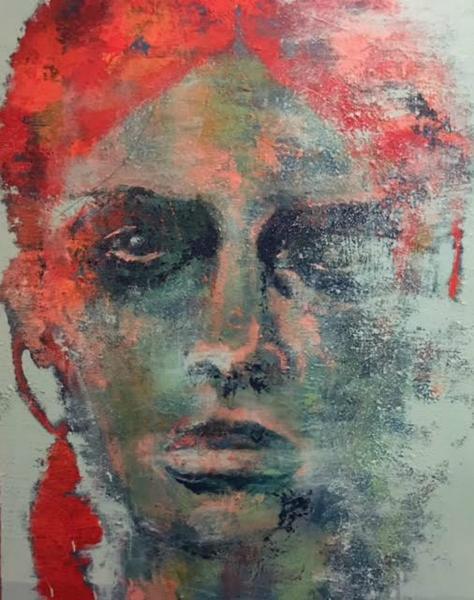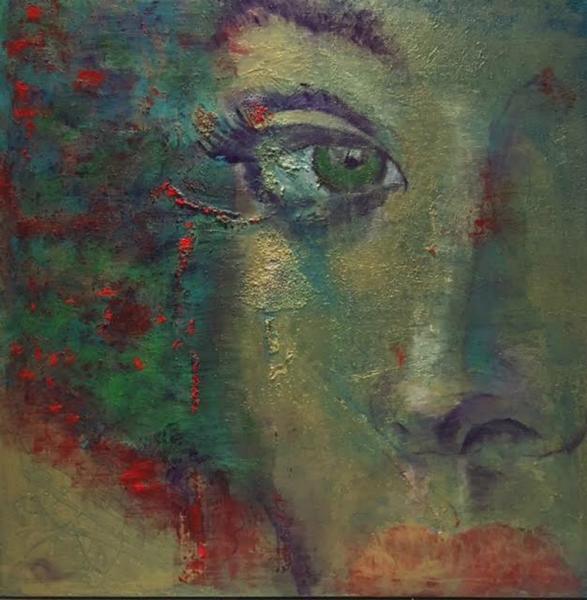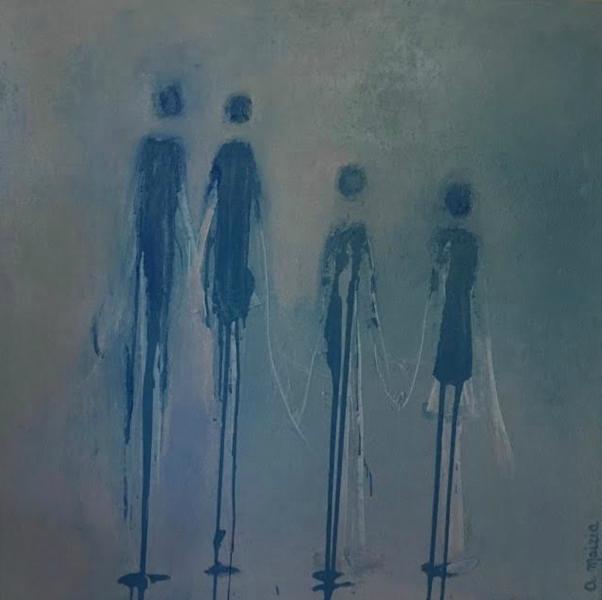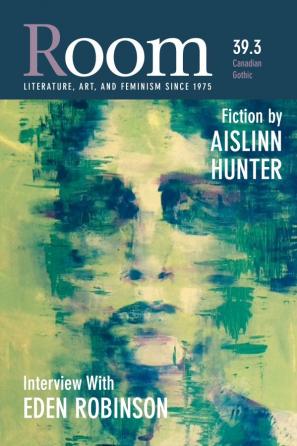Originally from Belgium, Anne Maizia has spent much of her life in the art centres of the world, developing her artistic style. During her seventeen years living in the New York, she studied mainly at the Art Students League of New York City. Now based in Toronto, Anne is a figurative and abstract painter, who had her first solo show in 2011. Lindsay Glauser Kwan, Room’s art coordinator, spoke to Anne about the many moods of her work.
Originally from Belgium, Anne Maizia has spent much of her life in the art centres of the world, developing her artistic style. During her seventeen years living in the New York, she studied mainly at the Art Students League of New York City. Now based in Toronto, Anne is a figurative and abstract painter, who had her first solo show in 2011. Lindsay Glauser Kwan, Room’s art coordinator, spoke to Anne about the many moods of her work.
LGK: Portraits are said to capture the essence of a person. You mentioned that you liked to capture a subject’s mood. Can you explain your process and how you would determine a mood?
AM: First of all, what I do is get a picture of a woman that I like (I keep it for the proportions of the subject) and then I work on my background colors and texture. I have a theory about the people you meet, that you don’t know much about them, therefore my portraits are blurry or half-painted.
I try to convey a mood, a feeling through the eyes, the blur, the abstract background of the image. When I use my brush, my knife, my textures, I release my own moods. For me, painting is like my yoga, my therapy. Whatever I feel is coming out on the canvas, it is quite magical.

Cara, 2016; Acrylics/Mixed Media, 122 x 92 cm
LGK: One of your paintings became the cover image for our 39.3 Canadian Gothic issue. It is called Rage, but I found it interesting that it was painted in predominantly blue and green hues, which, I would think, is traditionally is associated with emotions like sadness. How is the emotion of rage conveyed in the work?
AM: Rage comes often from sadness but I don’t know if you saw the eyes—there is some red coming out of them. There is something quite dark in there. You can see the darker emotions coming out, that’s what I felt at the time. There is also something mysterious about that person, and in that sense, it suits the gothic theme. I don’t think about the colors that fit the rage. I just pick the colors I feel like working with.
LGK: I thought perhaps the mood of rage is conveyed through the brushstrokes. I notice that you use a lot of texture in your work that isn’t really conveyed online or in pictures. It seems like you are really working with the medium of paint—almost sculpturally, but not quite as thick as that.
AM: Yes, I like to work with the texture. For me, painting is like working in the kitchen. I throw anything that I want on [the canvas].

Cloud9, 2016; Acrylics/Mixed Media, 92 x 92 cm
LGK: Do the other the formal elements of a work—like texture, color, paint—convey emotion to you?
AM: The texture, size, color, placement of the subject on the canvas—everything is conveying a mood. Looking at my abstract background, your thoughts can be “lost” in the work, you can interpret it in any way. Everyone can dig in and find something that speaks to them.
LGK: You have said that by drawing a person’s form, movement, or lines, you are telling your own story. Can you explain this?
AM: I’ve been in Toronto for two and a half years. A couple of months after my arrival, I lost a couple of people—male figures. Painting allowed me to release the feelings I was going through. It is telling my own story in the sense that it is telling how I feel. It might not be obvious to others but I see it so clearly when I am done painting. I find that amazing.

Gigi, 2016; Acrylics/Mixed Media on Canvas, 76 x 76 cm
When I start a painting, I don’t know what the end will be on the canvas. I look at it and it is telling me things that I even try to hide to myself because like most people, I try sometimes to be in control of my emotions but on the canvas, it is all there. I think, Wow! It is so obvious. Yes, it is telling my own story, but of course, I am the only one who would know that.
I love painting, it is a part of me.
LGK: Some of your work is abstract, particularly your series of elongated human figures. What compels you to portray the human body in this way?
AM: I always loved the sculptures of Giacometti. He is one of my sources. I just got into that series and thought, oh, I love it. And so I started drawing figures, families, and things like that. It is also referring to how I felt at the time I painted, there is also some kind of nostalgia to it.

Impression, 2016; Acrylic/Mixed Media, 102 x 102 cm
LGK: You are originally from Belgium, but you studied at the Art Students League in New York City, Parsons School of Design, and the Glassell School of Art in Houston. Now, you are located in Toronto. What do you think about the Canadian art scene?
AM: I think there’s a good art scene, but it could be developed even further. Of course, I am comparing it to New York, and you know, New York is the centre [of the art world]. I think people here are eager for the arts but we need to do more [for the arts].
LGK: How should we do to support more Canadian artists?
AM: Talking about artists. Interviewing them. Seeing their work. Go to galleries. Buy the art. I mean, I think people are really eager to see different work of arts. When I show mine, whether it is in galleries or through social media, I can see that people are very interested, it speaks to them in various ways, they give me their feedback, so I always think that’s also a good way to support artists.
LGK: At Room, we focus on the work of emerging writers and artists. Can you recommend some emerging artists or artists in the Canadian art scene that you are inspired by?
AM: I went to a school [in Toronto] because I wanted to meet other artists. You know, art is a very solitary work, and they gave me the names of some artists. Barbara Cole (not really an emerging artist). She is a photographer who shoots underwater pictures; they are just amazing and beautiful. There is also the Canadian-born Andrew Salgago who does large-scale figurative paintings that I like. And I am sure there are plenty of other ones out there that just need to be discovered.














